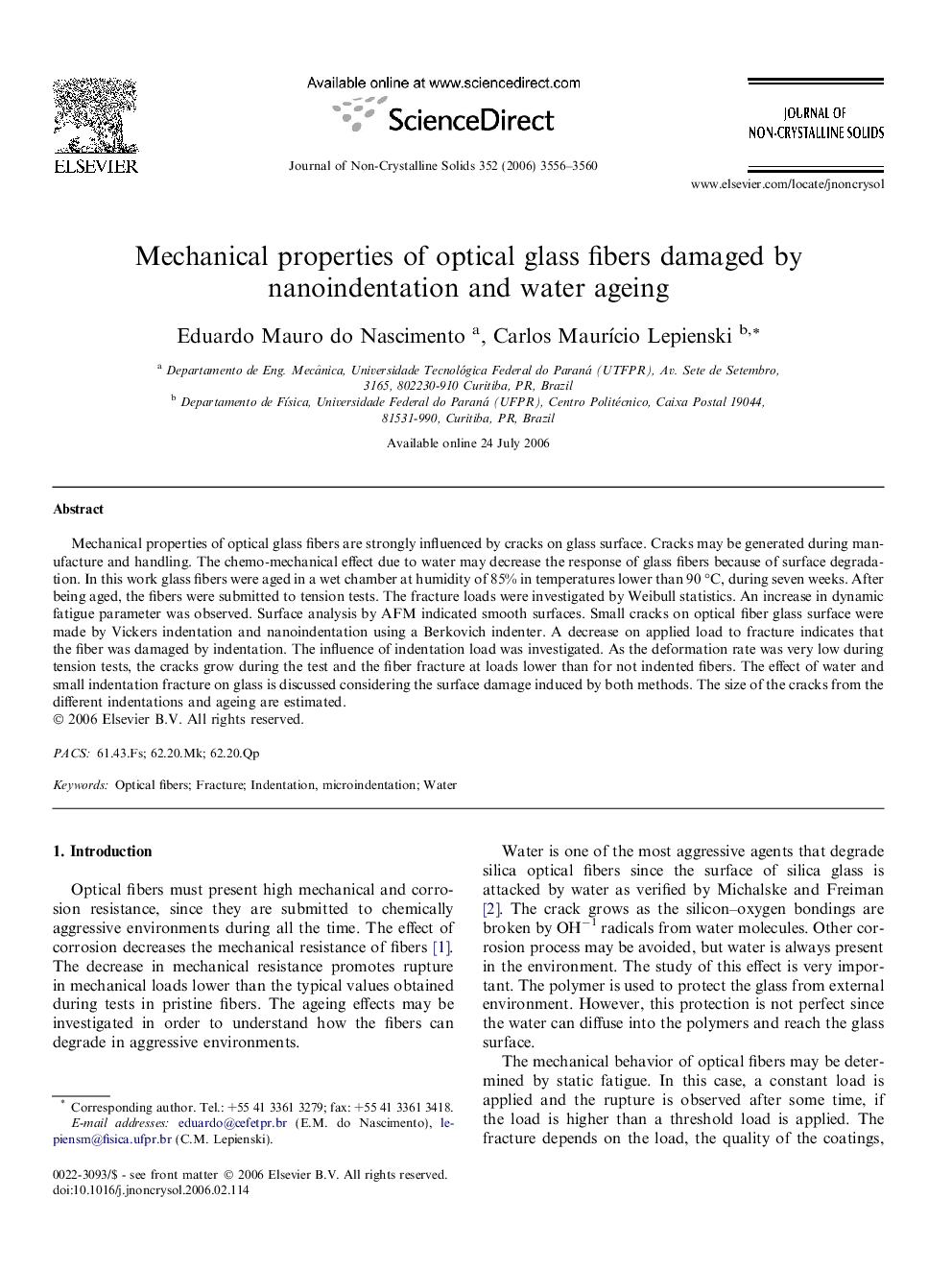| Article ID | Journal | Published Year | Pages | File Type |
|---|---|---|---|---|
| 1486016 | Journal of Non-Crystalline Solids | 2006 | 5 Pages |
Mechanical properties of optical glass fibers are strongly influenced by cracks on glass surface. Cracks may be generated during manufacture and handling. The chemo-mechanical effect due to water may decrease the response of glass fibers because of surface degradation. In this work glass fibers were aged in a wet chamber at humidity of 85% in temperatures lower than 90 °C, during seven weeks. After being aged, the fibers were submitted to tension tests. The fracture loads were investigated by Weibull statistics. An increase in dynamic fatigue parameter was observed. Surface analysis by AFM indicated smooth surfaces. Small cracks on optical fiber glass surface were made by Vickers indentation and nanoindentation using a Berkovich indenter. A decrease on applied load to fracture indicates that the fiber was damaged by indentation. The influence of indentation load was investigated. As the deformation rate was very low during tension tests, the cracks grow during the test and the fiber fracture at loads lower than for not indented fibers. The effect of water and small indentation fracture on glass is discussed considering the surface damage induced by both methods. The size of the cracks from the different indentations and ageing are estimated.
